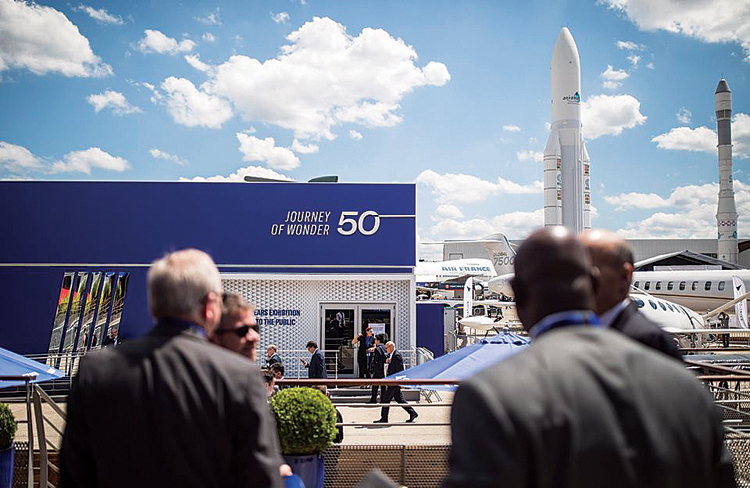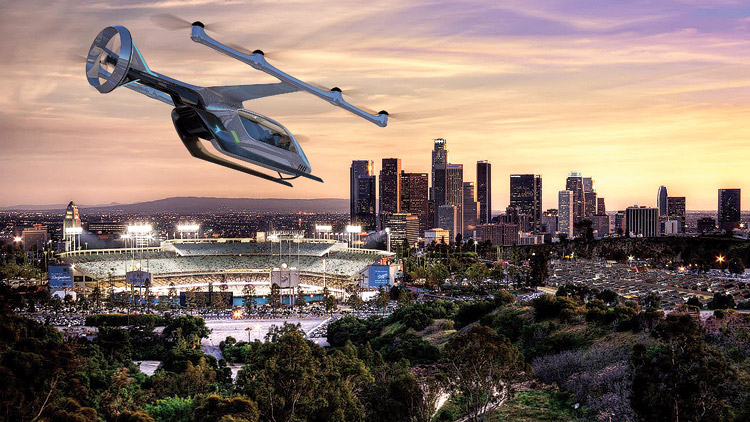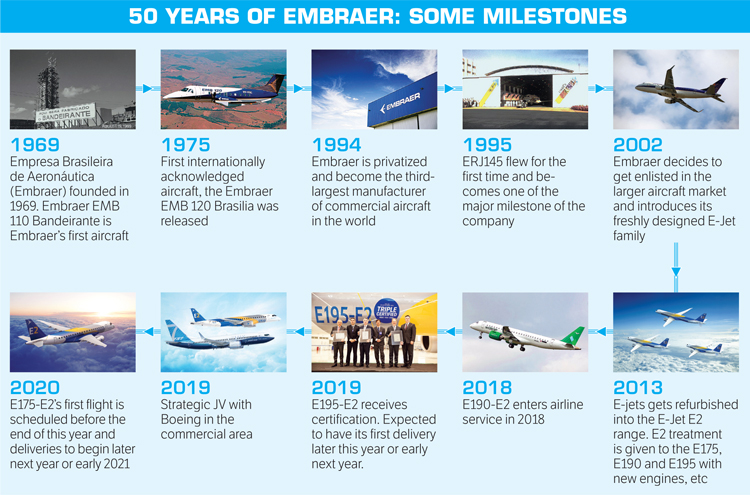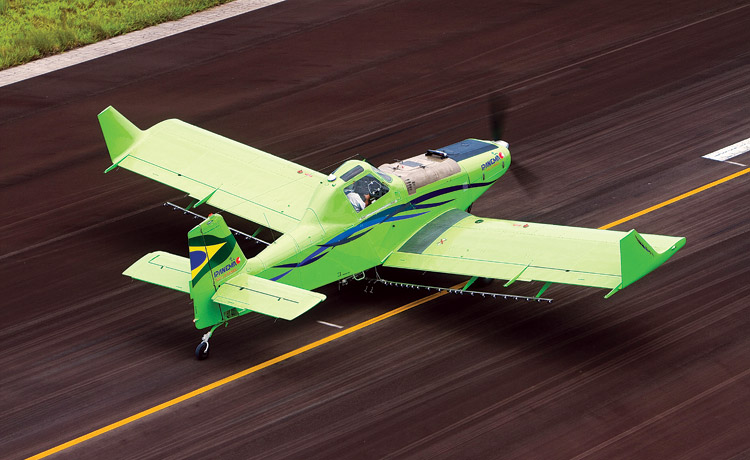Embraer’s 50 years of Wonder, Innovation and Success
From turboprop to eVTOL, the five decades of Embraer’s journey have been nothing short of a fascinating transformation

What started as an aircraft manufacturer to cater to the aviation needs of Brazil 50 years ago, is the third-largest aircraft manufacturer in the world today. Found in 1969 on the back of a single turboprop aircraft, the EMB 110, Embraer painted a significant picture for Brazil, putting it on the map of the global aviation industry. During the last five decades, Embraer has facilitated and developed solutions to improve human transportation.
HOW IT ALL BEGAN
In August 1969, the government of Brazil took a decision to invest in the aviation manufacturing industry and founded a company under the name of Empresa Brasileira de Aeronáutica (Embraer). The company was required to develop civilian projects.
The 15-21 seater Embraer EMB 110 Bandeirante was Embraer’s first aircraft. EMB 110 could be used by the government or even commercial businesses to serve small settlements around Brazil, suiting the regional passenger market as well as the military transportation. The manufacturer remained domestic until 1975 when its first internationally acknowledged aircraft, the Embraer EMB 120 Brasilia was released.

Created by the Brazilian Government as state-owned, Empresa Brasileira de Aeronáutica S.A., Embraer was initially conceived to transform into engineering and industrial capacity, the science and technology developed by Brazilian Centro Técnico de Aeronáutica (CTA) as well as the Instituto Tecnológico de Aeronáutica (ITA). In 1994, Embraer was privatised and became the biggest exporter of high technology products of Southern Hemisphere and the third-largest manufacturer of commercial aircraft in the world.
EMBRAER’S EXTENSION
The company continued its successive trail in Europe when it slid into the jet range with its Embraer Regional Jet (ERJ) family. Having 30-50 seats, ERJ130/5 and ERJ140/5 aircraft gained popularity with regional airlines and witnessed over 1,200 ERJs being built. With ERJ145, showcased in 1989, Embraer made way into the regional airliner market as well. Making use of the same stretched fuselage of the EMB 120, the ERJ145 could accommodate 50 passengers and fly up to a range of 2,000 nmi depending on the variant. However, before it took its first flight in 1995 and became one of the major milestone of the company, the ERJ145 flew faced several hindrances since 1989 due to the dangling Brazilian economy.
Under the veil of success gifted by the ERJs, in 2002 Embraer decided to get enlisted in the larger aircraft market and introduced its freshly designed E-Jet family and welcomed global approval again. Offering economic, fast and reliable flights on short routes, the E170/175 and E190/195 became ideal for airlines operating inter-cities in Europe and North America.
UNDER THE VEIL OF SUCCESS GIFTED BY THE ERJS, IN 2002 EMBRAER DECIDED TO GET ENLISTED IN THE LARGER AIRCRAFT MARKET AND INTRODUCED THE E-JET FAMILY
Unveiled in 2013, the E-jets were then refurbished into the E-Jet E2 range. E2 treatment was given to the E175, E190 and E195 consisting of uprated engines, improved wing design, new avionics and an updated cabin. This marked yet another successful tryst with regional airlines. With a capacity of around 80 passengers, the E175-E2 was the smallest one while the E190-E2 had around 96 seat capacity. The 120 seater E195-E2 is, however, the largest aircraft built by Embraer. While the E190-E2 entered airline service in 2018, the E195-E2 received certification in early 2019 and is expected to have its first delivery later this year or early next year. The E175-E2’s first flight is scheduled before the end of this year and deliveries are to begin later next year or early 2021.

Today Embraer has made its mark not only in the civil aircraft range but also in the business aviation industry with its impressive fleet of Business Jets that include the Phenom and Legacy series.
ADVANCING TOWARDS THE FUTURE
As the company’s website states: “The future will lead us into extraordinary challenges, but we’re dedicated to develop new technologies that will help us overcome these barriers. Whether in the sky, on land, at sea, or in the cities, Embraer is ready to propose disruptive solutions and build what’s next. With Embraer, the future is closer than you ever imagined.”
- Recently, Embraer has disclosed its first fully electric aircraft. Currently, under development, it is a demonstrator project comprising of 100 per cent electric propulsion technology. For the elementary evaluation of the electrification technology, the small, single-engine aircraft based on the EMB-203 Ipanema agricultural aircraft shall be installed with the technology to be tested. Ipanema, the agricultural aircraft provided the basis for the electric prototype. The first flight of this aircraft is scheduled in 2020, until then the demonstrator aircraft will continue to go through tests.
- EmbraerX rolled out its new goals for the development of eVTOLs, their air traffic regulations and the creation of a fleet agnostic aviation services network at the Uber Elevate Summit 2019. The air taxi with an eight-rotor system, aims to optimise urban environment and focus on high reliability, low operating costs, and low noise footprint.
THE EMBRAER-BOEING PARTNERSHIP
In the same year that Embraer celebrates its 50th anniversary, the company also undergoes major changes. One of them is its strategic joint venture with Boeing in the commercial aviation area.
Last year, a major announcement came when two of the largest aircraft manufacturers, Boeing and Embraer announced a strategic partnership that positions both companies to accelerate growth in global aerospace markets. The proposal had highlighted the formation of a joint venture comprising the commercial aircraft and services business of Embraer that would strategically align with Boeing’s commercial development, production, marketing and lifecycle services operations. Under the terms of the agreement, Boeing will hold an 80 per cent ownership stake in the joint venture and Embraer will own the remaining 20 per cent stake.
The proposed partnership has received shareholders’ approval, ratification by the board of directors and the authorisation by the Government of Brazil this year.
50 YEARS’ CELEBRATION
Bringing together employees, authorities and commercial partners at the company’s headquarters, in São José dos Campos, Brazil, Embraer celebrated its 50-year anniversary on August 19, 2019.
“Embraer resulted from the determination of visionaries who wanted to transform the impossible into reality – and they did it. That’s what we want to show with these actions at this historic moment for the company. We grew up with this spirit, we’ve reached 50 and that is how we will continue over the next decades,” stated Francisco Gomes Neto, President, and CEO of Embraer in a press release.

Several activities were planned and prepared through the last year to remember the five decades of Embraer’s journey:
- To share that journey in details, Embraer had also been conducting a series of global promotional actions in Brazil and abroad including participation in events and airshows in the Americas, Europe, Middle East, and Asia, demonstration flights, a historical exposition of classic and new aircraft and the launch of a commemorative edition book.
- An air show of the Embraer fleet also took place that enthralled thousands of people who had gathered at the venue to be a part of the festivities.
- A digital campaign, “Journey of Wonder”, narrated the 50 years of the company that led it to become the global leader of manufacturing commercial jets up to 150 passengers and a prestigious player in such a competitive market as business aviation.
- As part of the celebrations, Embraer also promoted the global media campaign “Challenge-driven, dream-driven”. With presence in programmatic media and social media, advertisement in newspaper and magazines, in addition to advertising movie, the campaign show the company’s overcoming stories and its achievements, showing the greater contributions of both its human and technological capital, to the global aerospace industry.
- To inspire people to fly high, the exhibition “On the wings of imagination” was also presented by Embraer in a city park in São Paulo, Brazil. In an immersive and fun place, some milestones and aircraft that marked the company’s history were introduced, in addition to an ERJ 145 model, banners and seesaws.
- Through information and images of the first aircraft and factories built in Brazil, Embraer’s website has also highlighted the history of the Brazilian aeronautics industry.
- The social media channels of the company showcased daily content and testimonials that highlight the motivation, the dreams, the challenges and other curiosities related to our people and to our products.

The company designs, develops, manufactures and markets aircraft and systems, providing Services & Support to customers’ after-sales celebrated its 50th anniversary with successful operations in various aviation sectors:
Commercial Aviation. The Company has 100 customers from all over the world operating the ERJ and E-Jet families of aircraft. The E170, E175, E190, and E195 set the standard in their category with their advanced engineering, a high degree of efficiency, spacious, ergonomic cabins with two-by-two seating, and attractive operating economics. For the E-Jets programme alone, Embraer has logged more than 1,800 orders and 1,500 deliveries to some 70 airlines in 50 countries, and same and more is expected from the E-Jets E2 range.
Executive Aviation. Embraer is one of the world’s leading executive jet manufacturers, having entered the business aviation market in 2000 with the Legacy jet, which led to the launch of Embraer Executive Jets in 2005.
Its portfolio, among the broadest in the market, consists of the entry-level Phenom 100EV and the light Phenom 300E jet, the medium cabin Legacy 450 and Legacy 500, the midsize Praetor 500 and super-midsize Praetor 600, the large Legacy 650E, and the ultra-large Lineage 1000E.
Agricultural Aviation. The crop duster Ipanema is one of the first aircraft launched by Embraer and manufactured uninterruptedly for close to 50 years. In 2015, a new version of the aircraft, the Ipanema 203 was launched. Moved by renewable energy (ethanol), the aircraft is more agile and efficient, which ensures greater productivity. It can be used to spread seeds, fight vectors and larvae, in primary firefighting and river settlement.
EmbraerX. Keeping up with its innovation-centric approach, a wholly-owned Embraer subsidiary, EmbraerX exists to build disruptive businesses, considering that transportation will probably be disrupted by the exponential growth of new technologies as well as the development of new business models.
The writer is a 35-year airline industry veteran. He was a former Domestic Airline Pricing Director for Air Canada and Global Marketing Director at Bombardier and Embraer.





